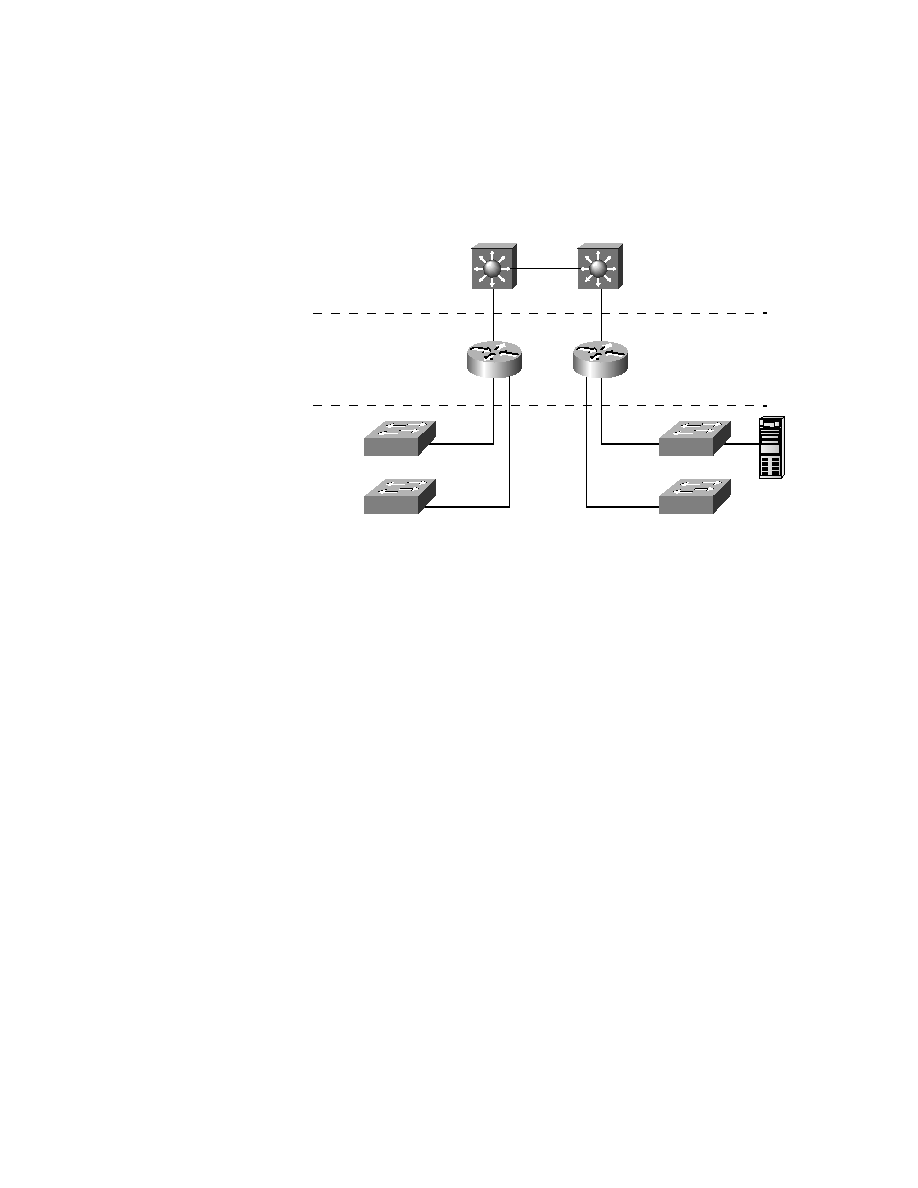
essarily mean three separate devices. Consider the OSI model, another logical
hierarchy. Its seven layers describe functions but not necessarily protocols,
right? Sometimes a protocol maps to more than one layer of the OSI model,
and sometimes multiple protocols communicate within a single layer. In the
same way, when we build physical implementations of hierarchical net-
works, we may have many devices in a single layer, or we might have a single
device performing functions at two layers. The definition of the layers is log-
ical, not physical.
fic local" has almost become a clichй in the networking world. However, the
underlying concept has merit. Hierarchical design lends itself perfectly to ful-
filling this concept.
layer
layer
layer